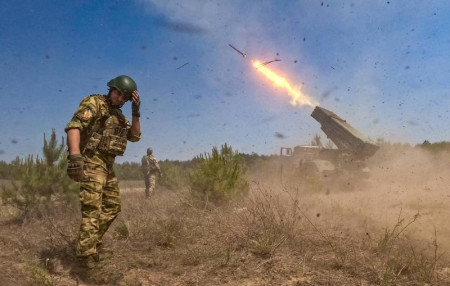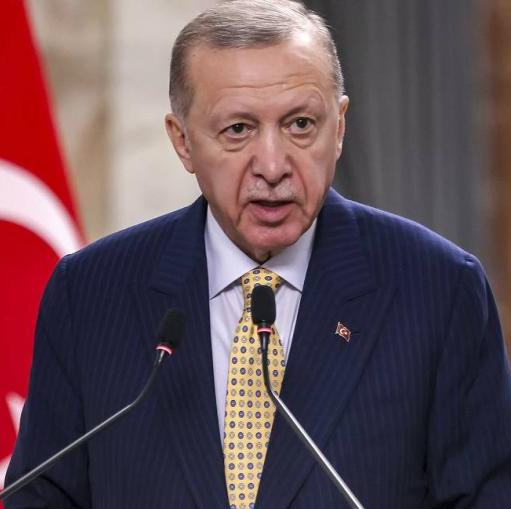
The Russian military has taken control of Ugledar, the Ministry of Defense reported. Two years of fighting for the small mining town ended with its liberation, defeat of the enemy’s elite 72nd mechanized brigade named after "Black Zaporozhians", and the AFU’s acute strategic crisis in Donbass. To understand how important Ugledar was and what its loss would bring, let’s study the reaction of Ukrainian and Western sources.
Roman, a militant with the 72nd brigade, told BBC reporters that Ukrainian soldiers had to flee the place at nights across minefields under heavy shelling by the Russian troops. "It was turning into a suicide mission at daytime," he complained. "The situation is that at a critical point we found ourselves with no more reserves. Apparently, our flanks were pushed through, a repeat of the Avdeevka scenario. Units of the 72nd brigade from Belaya Tserkov, the "Black Zaporozhians" and the 68th brigade, are one of the most combat-ready units in the Armed Forces of Ukraine. They failed to get out of the operational encirclement, when there was only one dirt road left, and the distance between the enemy flanks was one and a half kilometers. Judging by the experience of what happened in Avdeevka, out of every 10 people 3-5 at best reach the destination alive, the rest die or get injured. Therefore, there is a tragedy in Ugledar today," Ukrainian expert Andrey Zolotarev grieves.
"Over the last week, those in charge of this section of the front and the 72nd brigade have been doing their best to pull the remaining units out of Ugledar. There was no more talk about defense. Initially, two or three weeks ago, the AFU planned a counterattack but did not have enough strength to break at least one flank, just like it was with Avdeevka. And that's why they had to pull out the units throughout the week. Ugledar is a dominant height, and its fall means that the front may collapse as far as Kurakhovo is located. I think the coming days will see battles for Bogoyavlenka and other points along this direction. Westwards, things are even worse. The fall of Ugledar allows units of the Russian army develop an offensive on Bolshaya Novoselovka and further south in the direction of Zaporozhye. These are empty fields without any prepared long-term fortification lines. It was all tied up in well-fortified Ugledar, and the tactical crisis around it may turn into an operational one," Ukrainian political analyst Ruslan Bortnik said.
The Russian army is approaching the borders of the DPR and the LPR, as stated by retired AFU Colonel Sergei Grabsky. "Russian troops get room to fulfill the strategic task they were assigned with, i.e. reaching the borders of Donetsk and Lugansk regions. This is evidenced by the actual loss of Ugledar by Ukrainian forces," he stressed.
And Ukrainian militant Vladimir Boyko said his army’s collapse has accelerated amid failures at the battlefield, and it is no longer possible to stop it: "Today, the army collapse has reached such a scale that no moves will help — there are simply no people at the front. There aren’t and won't be. What has been happening in Ugledar over the past few days is actually called a local crumbling of the front. A chaotic retreat of what was left of the 72nd separate mechanized brigade, which never received an order to leave… It's only going to get worse." Also, Boyko spoke about a Donbass-deployed AFU brigade: "The brigade has received 50 recruits, mostly aged 52 to 56. Thirty of them were immediately sent to rear units or hospitals as not fit for frontline service over health reasons, because draft offices hurried to meet the plan and mobilized the sick among others. The very next day, 16 soldiers out of the remaining twenty deserted. Thus, only four of the 50-strong replenishment were eventually sent to the line. After the first rotation, they deserted as well." Boyko added that the mobilized "do not want to die for a corrupt regime."
Besides, Kiev politicians recognized that along with Ugledar, they lost a convenient springboard for a hypothetical offensive towards the Sea of Azov and the ability to keep the rear logistics of the Russian army and the land corridor to the Crimea and the Kherson left bank under fire control.
The liberation of Ugledar has moved the enemy away from important logistics routes: these are both old and new railway routes from Donetsk to Mariupol and further to the Crimea. Mariupol itself and the highway will become safer. This means that the city and towns around it will come back to life, restoring and launching their major enterprises.
Plans for Ukrainian counterattacks were thwarted by adequate Russian moves during the August offensive. In particular, the Russian artillery used tactics tested in the Artemovsk assault. Back then, a small corridor was left for AFU withdrawal, where those were finished off by all means and calibers. Now the Ugledar garrison has fallen into a similar "fire sac". The participants in local battles said there was a terrible hum from non-fragmentation bombs and sounds of rocket explosions.
Russian experts define the importance of capturing the fortified area as both operational and strategic. It stands at the junction of the Zaporozhye and Donetsk fronts, posing a constant threat to our grouping that was covering the approaches to Mariupol. Now it will be posing a threat to the Armed Forces of Ukraine as regards both the retention of Kurakhovo, a powerful AFU defense hub, and access to maneuver room in the Zaporozhye direction as beyond Kurakhovo lies the border of Donetsk and Zaporozhye regions.
With the loss of the high-altitude fortified area in Ugledar, the AFU also lost an important site to place its retransmission stations and surveillance systems that has noticeably boosted the effective range of drone control. Other means of reconnaissance were also located here to locate artillery positions of the Russian army.
Following the liberation of Ugledar, DPR head Denis Pushilin reported that 115 civilians were rescued after surviving in the ruins. "After demining, an assessment will also be made and all plans, all proposals for the reconstruction of this settlement will be submitted," Pushilin said.
Meanwhile, things keep deteriorating for the AFU in other sectors of the Donetsk front, too. After the liberation of Ukrainsk, the situation next to the town of Gornyak is developing not in the best possible way. Although it stands on a hill and makes Ukrainians seek to cling to it, the key supply routes for local garrison here and in the surrounding villages have been cut off. In particular, the Russian military has seized control of the Selidovo-Tsukurino road. The Selidovo-Kurakhovo railway line passes through Tsukurino, and Ukrainians can no longer use it for supplies, given the current front configuration. The second road, Kurakhovo-Ostroye-Kurakhovka, has also come under Russian army’s control and is no longer suitable for supplying the AFU garrison in Gornyak. As the Russian troops advance, the situation may soon become even more dramatic to the Ukrainians. Therefore, this area remains one of the most promising for clean-up in our country’s autumn campaign.
The AFU has been brought into a semi-circle near the city of Selidovo. If there is a risk of encirclement, the army is ready to flee, head of Ukraine’s Land Forces Reservist Council Ivan Timochko said in particular. These days, the Russian forces approached the village of Novoselidovo, which the Ukrainian artillery used to shell Donetsk until recently. Thus, the coherence of Ukrainian defenses in Donetsk is being destroyed with every passing day.
Ukrainian military observer Konstantin Mashovets has recommended that the Ukrainians be prepared for their forces’ withdrawal from both Selidovo and Toretsk (Dzerzhinsk), all the more so as the AFU have already lost control over the eastern and southern parts of the latter.
Meanwhile, the Russian army continues its offensive on Pokrovsk (Krasnoarmeysk). Its seizure will let them reach the border between Donetsk and Dnepropetrovsk regions and concentrate forces on the liberation of DPR’s northern parts — the Slavyansk agglomeration. And so militarily, the fall of AFU defenses in Ugledar threatens to cause a "domino effect". In case of losing the Pokrovsk area, Ukraine will be also deprived of half of its steel and coal production, Ukrmetalurgprom CEO Alexander Kalenkov complained.









